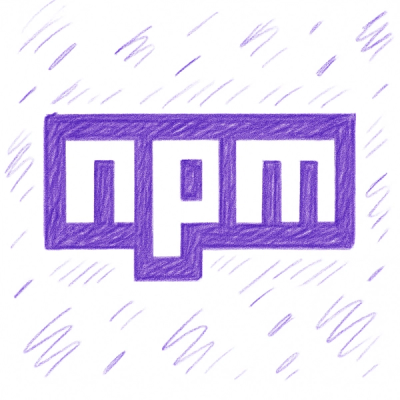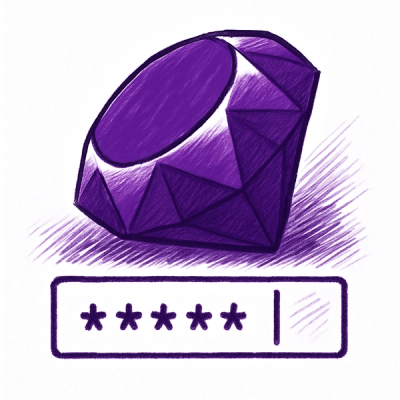
Security News
npm Adopts OIDC for Trusted Publishing in CI/CD Workflows
npm now supports Trusted Publishing with OIDC, enabling secure package publishing directly from CI/CD workflows without relying on long-lived tokens.
hashicorp-vault-django
Advanced tools
Hashicorp vault is a Python-Django app for the improvement application security leveraging secrets
* pip install hashicorp-vault-django
* Add ``hashicorp_vault`` to your ``INSTALLED_APPS``
::
* make config directory at project root level and create application.yml file inside config directory
* application.yml sample for vault configuration
* vault:
host: vault url # https
secret_engine: mount path # secrests-config
application: application path # secrets-ai
username: username
password: password
* if your secrets stored in `/vault/secrets/secrets-config/kv/secrets-ai/` then use secrets-config as secret_engine and secrets-ai as application in vault configuration
* consume vault secrets in your settings.py file
from hashicorp_vault.vault import get_vault_secrets
vault_secrets = get_vault_secrets(BASE_DIR)
DATABASES = {
"default": {
"ENGINE": config["datasource"]["DATABASE_ENGINE"],
"NAME": vault_secrets.get("db_database"),
"USER": vault_secrets.get("db_user"),
"PASSWORD": vault_secrets.get("db_password"),
"HOST": vault_secrets.get("host"),
"PORT": vault_secrets.get("db_port"),
"OPTIONS": {"charset": "utf8mb4"},
},
}
* Use secret keys to access to secret values from vault
::
This package supports multiple authentication methods for HashiCorp Vault. Configure your prefered method via the application.yml file. The vault.authentication key determines which method will be used.
Supported authentication methods include: * userpass * token * approle * jwt * ldap * github * gcp * azure * aws_iam * aws_ec2
Below are the configuration examples for each.
vault:
host: vault url # https or http
secret_engine: mount path
application: application path
username: username
password: password
1. userpass
Authenticates with Vault using the username and password method.
vault:
authentication: userpass (Optional)
host: url
secret_engine: mount_path
application: application_path
username: username
password: password
2. token
Use a pre-generated token to authenticate with Vault.
vault:
authentication: token
host: url
secret_engine: mount_path
application: application_path
token: 00000000-0000-0000-0000-000000000000
3. approle
Use Vault AppRole authentication with role_id and secret_id.
vault:
authentication: approle
host: url
secret_engine: mount_path
application: application_path
app_role:
role_id: bde2076b-cccb-3cf0-d57e-bca7b1e83a52
secret_id: 1696536f-1976-73b1-b241-0b4213908d39
4. jwt
Authenticate using JWT/OIDC. Commonly used with external identity providers.
vault:
authentication: jwt
host: url
secret_engine: mount_path
application: application_path
jwt:
role: your-jwt-role
jwt: your-signed-jwt-token
5. github
Authenticate using a GitHub personal access token mapped to a Vault policy.
vault:
authentication: github
host: url
secret_engine: mount_path
application: application_path
token: your-github-personal-access-token
6. gcp
Authenticate Vault using Google Cloud IAM and JWT identity.
vault:
authentication: gcp
host: url
secret_engine: mount_path
application: application_path
gcp:
role: your-gcp-role
jwt: your-signed-jwt-from-gcp-service-account
7. ldap
Authenticate using your LDAP (e.g., Active Directory) credentials.
vault:
authentication: ldap
host: url
secret_engine: mount_path
application: application_path
ldap:
username: your-ldap-username
password: your-ldap-password
8. azure
Authenticate using Azure VM or VMSS instance identity.
vault:
authentication: azure
host: url
secret_engine: mount_path
application: application_path
azure:
role: your-azure-role
jwt: your-signed-jwt-token
subscription_id: your-subscription-id (Optional)
resource_group_name: your-resource-group (Optional)
vm_name: your-vm-name (Optional)
vmss_name: your-vmss-name (Optional)
9. aws_iam
Authenticate via AWS IAM using signed headers and Vault IAM role
vault:
authentication: aws_iam
host: url
secret_engine: mount_path
application: application_path
aws_iam:
access_key: your-aws-access-key
secret_key: your-aws-secret-key
session_token: optional-session-token (Optional)
header_value: optional-canonical-request-header (Optional)
role: your-vault-role (Optional)
10. aws_ec2
Authenticate via AWS EC2 metadata service using instance identity document
vault:
authentication: aws_ec2
host: url
secret_engine: mount_path
application: application_path
aws_ec2:
pkcs7: your-pkcs7-signed-identity-document
nonce: optional-nonce (Optional)
role: your-vault-ec2-role (Optional)
::
{py3.8, py3.10}-django{4.* above}
FAQs
A Django app to manage the application secrets using hashicorp.
We found that hashicorp-vault-django demonstrated a healthy version release cadence and project activity because the last version was released less than a year ago. It has 1 open source maintainer collaborating on the project.
Did you know?

Socket for GitHub automatically highlights issues in each pull request and monitors the health of all your open source dependencies. Discover the contents of your packages and block harmful activity before you install or update your dependencies.

Security News
npm now supports Trusted Publishing with OIDC, enabling secure package publishing directly from CI/CD workflows without relying on long-lived tokens.

Research
/Security News
A RubyGems malware campaign used 60 malicious packages posing as automation tools to steal credentials from social media and marketing tool users.

Security News
The CNA Scorecard ranks CVE issuers by data completeness, revealing major gaps in patch info and software identifiers across thousands of vulnerabilities.